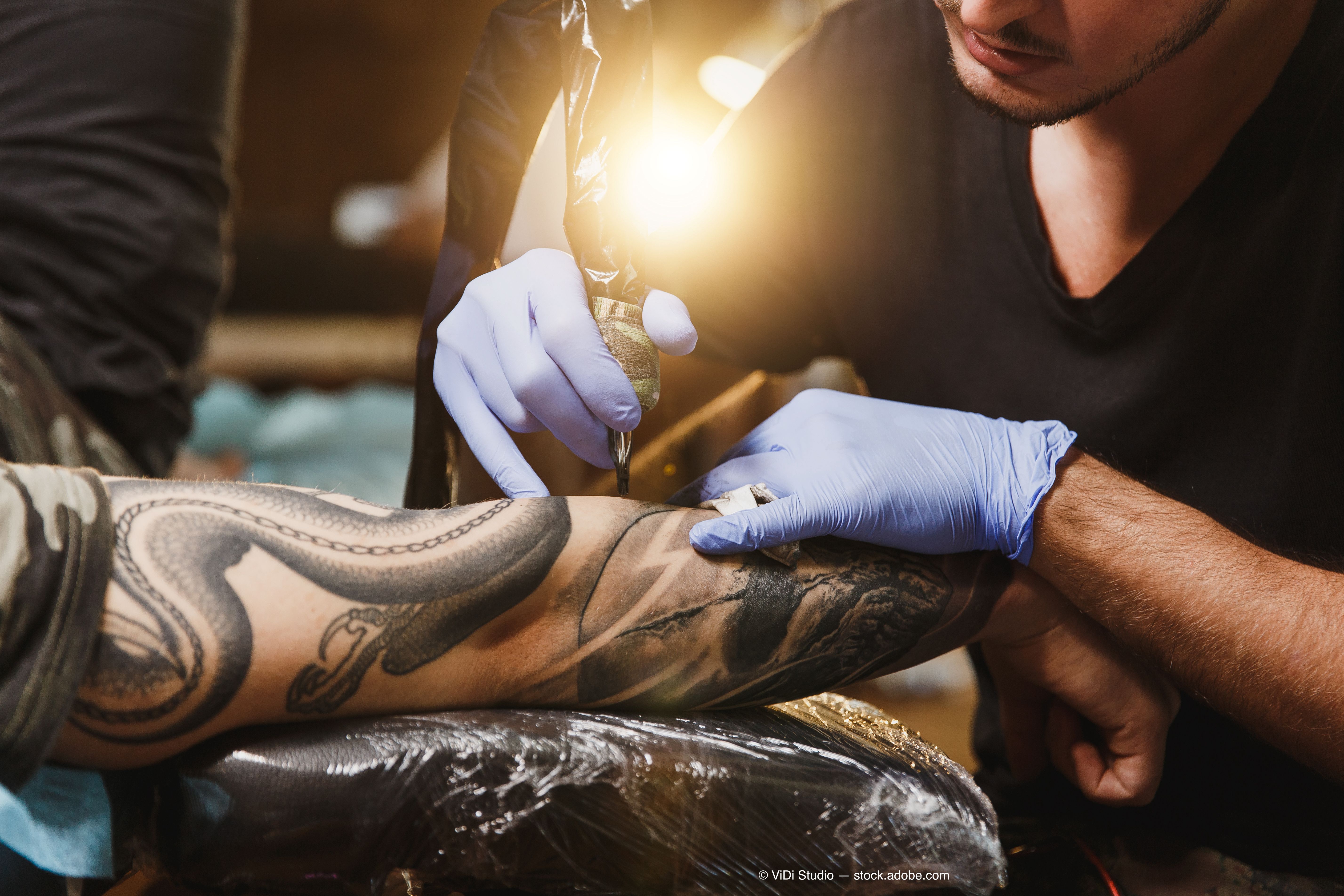Article
Case report: Intermediate uveitis caused by black ink tattoo
Author(s):
Jonathan D. Shader, DO, CPA, presents a case study involving an uncommon cause of posterior-intermediate uveitis: the black ink used to create a tattoo.

Jonathan D. Shader, DO, CPA, a resident at Western University of Health Science, College of Osteopathic Medicine, of the Pacific Northwest, Lebanon, OR, presented an uncommon cause of posterior-intermediate uveitis: the black ink used to create a tattoo.
A 39-year-old woman presented with bilateral ocular irritation, pain, photophobia, bilateral 1+ cells in the anterior chamber and vitreous, and puff ball at the ora, Shader described.
While the laboratory and imaging findings for uveitis were negative, this acute type of intermittent uveitis seemed to be associated with “swelling and induration of the patient’s black ink tattoos,” he pointed out.
Interestingly, this problem was not associated with tattoos created using other colors on the patient’s body.
When the black ink tattoo was made, no swelling or induration occurred at that time.
Treatment with oral prednisone resolved the symptoms, but they recurred with a steroid taper.
Adalimumab (Humira, Abbvie Inc.) successfully managed this case, Dr. Shader reported.
In commenting on the rarity of this reaction to black tattoo ink, he said that only a few such case series and reports of black ink tattoo associated uveitis have been reported.
“It is a condition with simultaneous inflammation of the eyes and skin, it is a bilateral, chronic, non-caseating granulomatous inflammation in individuals with extensive areas of tattooing that consist entirely of black ink,” he commented.
When a biopsy of the tattoos was performed, “a sarcoid-like reaction with granulomas that contained blank ink” was seen. Immunosuppression treatment and biologics are successful therapies in such cases.
This case was presented by Shader at the American Society of Cataract and Refractive Surgery as a poster from July 23-27, 2021.
He has no financial interest in this subject matter.
See more ASCRS coverage here
Newsletter
Don’t miss out—get Ophthalmology Times updates on the latest clinical advancements and expert interviews, straight to your inbox.




